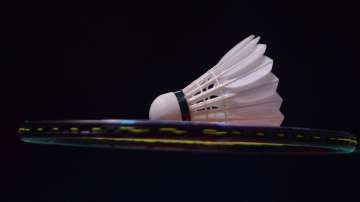The Badminton World Federation (BWF) is unlikely to go ahead with its plans of introducing synthetic shuttlecocks next year in international tournaments in the wake of the COVID-19 pandemic.
In January this year, the world body had approved the use of synthetic feather shuttlecocks at sanctioned international tournaments of all levels from 2021.
The shuttlecocks currently in use are usually made of goose or duck feathers.
However, Vikram Dhar, country head Yonex Sunrise (India), feels the introduction is set to be delayed by another year due to the coronavirus outbreak which has forced a suspension of all badminton tournaments, hitting the industry hard.
"That will take time, it might take a year more," Dhar told PTI when asked if he sees the synthetic shuttle being introduced in 2021.
The first synthetic shuttlecock, which is made of plastic instead of actual feathers, approved by BWF was developed with the technological cooperation of Yonex. The company also handled testing of various prototypes during the development phase of the project.
Talking about the challenges ahead, he said: "There will not be many events or activities in next few months. Many academies and camps are not functioning properly now. So, overall industry will take a hit. It is a wait and watch situation for everyone.
"We have to see how market will behave, how competitive sports resumes again."
India's chief national coach Pullela Gopichand also feels it won't be feasible to introduce the synthetic shuttle next year but he supports the new technology.
"I think may be for the next Olympics I don't know how feasible it would be to introduce it since we hardly have any time but I think we have to get synthetic shuttles in the long term," Gopichand said.
"I know it is a problem at the moment but we need to go away from natural feather because we had in the past experienced H1N1. It will help the game overall, whenever it happens."
The idea of moving away from traditional feather shuttlecocks has also led to some concerns among players and coaches, who are raising questions on the quality of the synthetic shuttles.
Gopichand said: "It will be a problem for players to adjust initially. It will change the game in some way which we are not sure of, whether it is an advantage or disadvantage for our country, we don't know.
"But with all the problems also, I am for synthetic shuttles because natural feather is not a long term solution especially with the pricing, kind of regulations, so at some point of time we have to accept it.
"It is basically a technology so one or two years down the line, it will behave better and we will produce better shuttles."
World Championships bronze-medallist B Sai Praneeth believes it will give an advantage to attacking players.
"I don't think they will introduce it next year now with the Olympics being postponed due to the coronavirus. They might start it from 2022," he said.
"...the quality of the sport will go down. You can't control it, you can't play a lot of strokes with synthetic shuttle. It will give advantage to attacking players. It will be tough to control. It will take lot of practice to get used to it."
India's men's doubles player Chirag Shetty feels synthetic shuttle is inevitable but it should be introduced gradually in the international circuit.
"...the process needs to be gradual so that players get used to it. If it is suddenly introduced in bigger events then it will affect the game.
"It can help attacking players, because it might be difficult to control. Attacking players will rush to the net and wait for the lift to score points.

